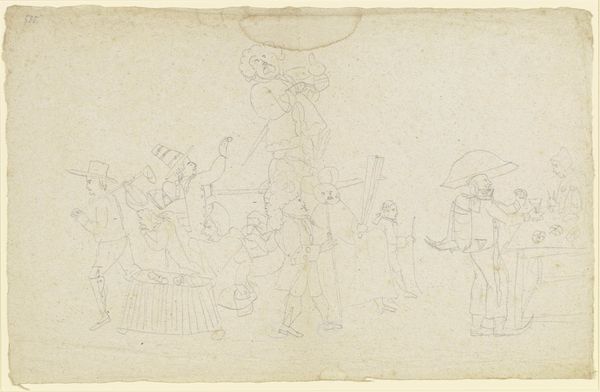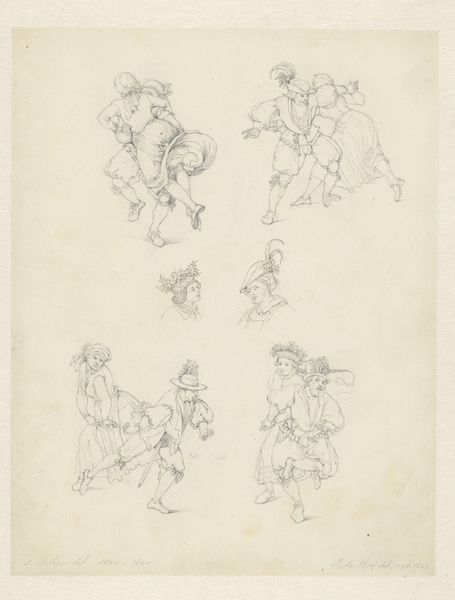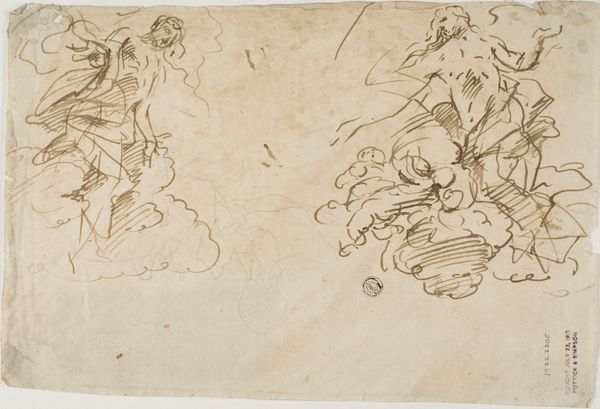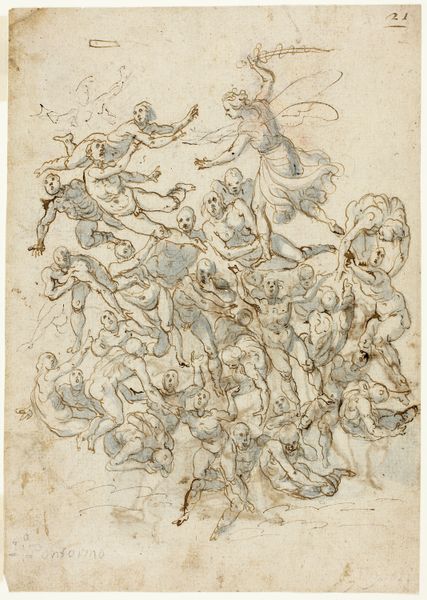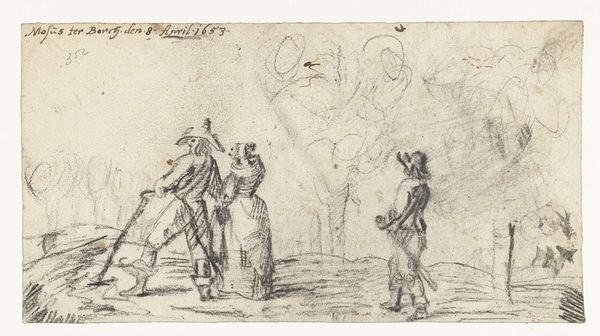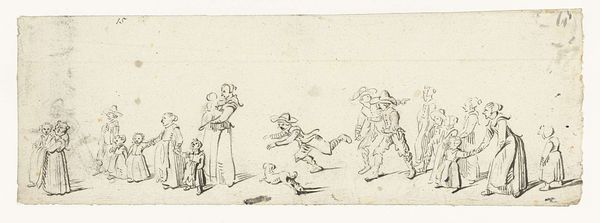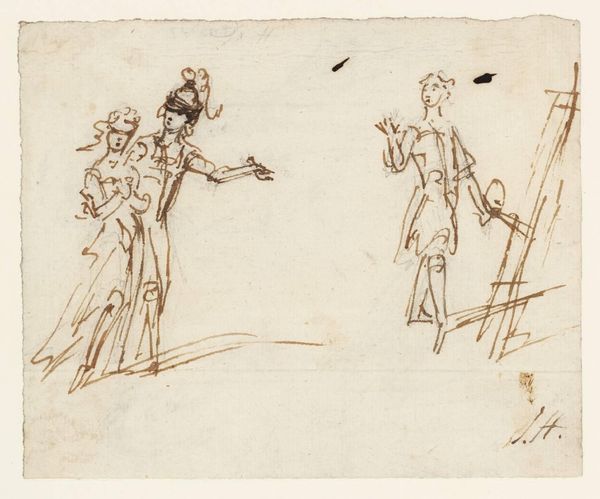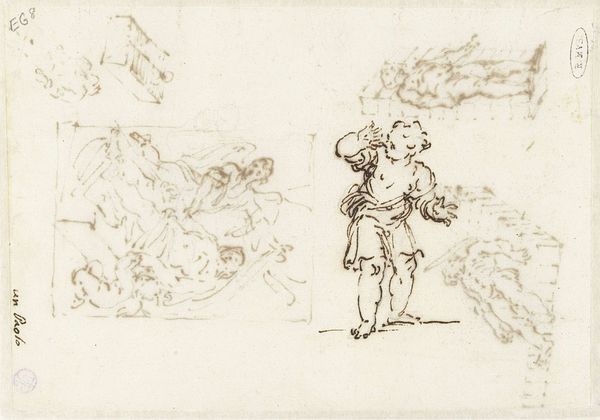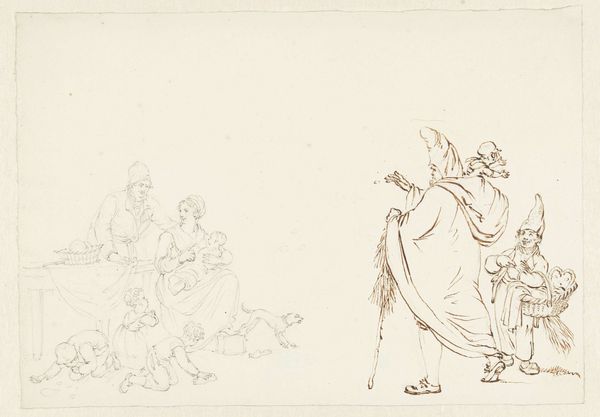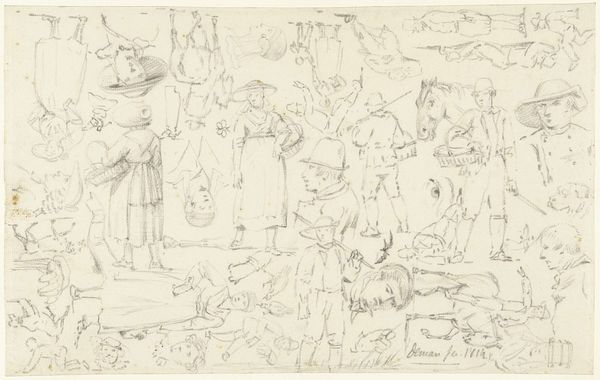
drawing, ink, pen
#
drawing
#
narrative-art
#
baroque
#
pen sketch
#
figuration
#
ink
#
pen
#
genre-painting
Dimensions: height 81 mm, width 133 mm
Copyright: Rijks Museum: Open Domain
Curator: This delightful pen and ink drawing, titled "Dancing Figures from the Commedia dell'Arte," was created by Moses ter Borch around 1656-1657. Editor: It's charming! The figures seem caught in a whirlwind of movement, yet the artist’s confident lines convey a great sense of energy despite the seemingly quick application. It reminds me of a sketch straight from the artist’s notebook. Curator: Ter Borch's work offers insight into the socio-cultural context of the mid-17th century. The Commedia dell'Arte was an extremely popular form of theatre, known for its masked characters, improvisation, and stock characters. The performance aspect sheds light on period social commentaries as expressed through the material means of production—like the pen and ink available and their broad use as tools for preliminary sketches of actors as entertainers. Editor: Yes, and thinking about those materials and the techniques involved, it points us towards the actual production and performance of theatre. Where would such shows take place? Who were these entertainers and what status did they occupy in society? This ink medium also shows a form of readily accessible documentation of the social conditions of the period. Curator: Absolutely. Moreover, Ter Borch’s gendered perspective also impacts what gets emphasized—I find the women he depicted are central in his reflection of performances of identity and class. Editor: Do you think that impacts how their materials might be rendered too, such as what garments they wear? There may be ways these material distinctions relate to gender, too! Curator: I would posit there is much to further investigate between materiality, performance and representation from a critical, feminist viewpoint when studying this artwork. Editor: I agree; the interplay of production, consumption, performance, and gender through simple material means opens the door to some rich understanding. This simple ink rendering contains surprising richness about the labour and lives surrounding early theatrical practices.
Comments
No comments
Be the first to comment and join the conversation on the ultimate creative platform.

